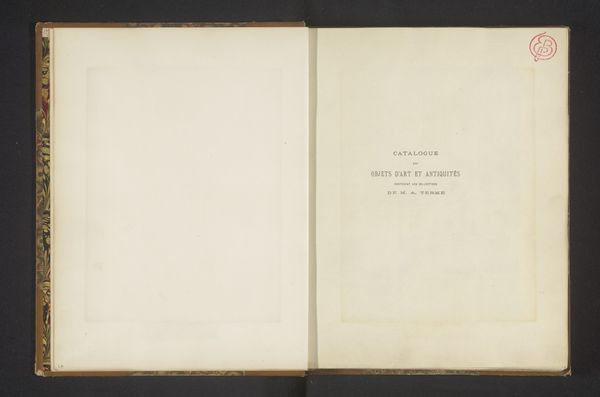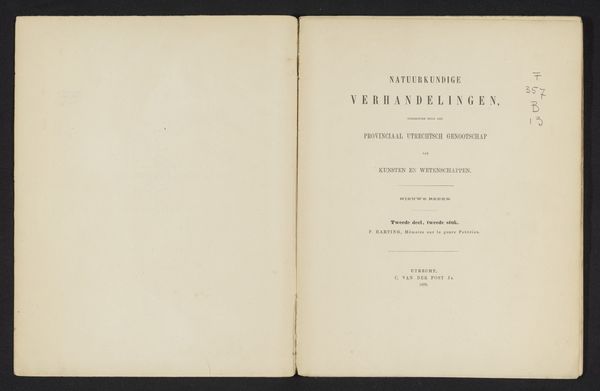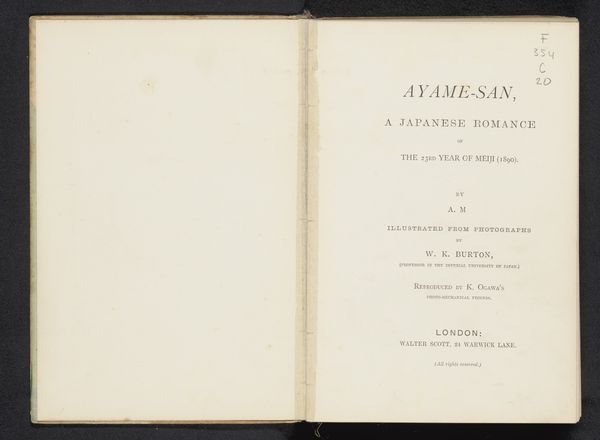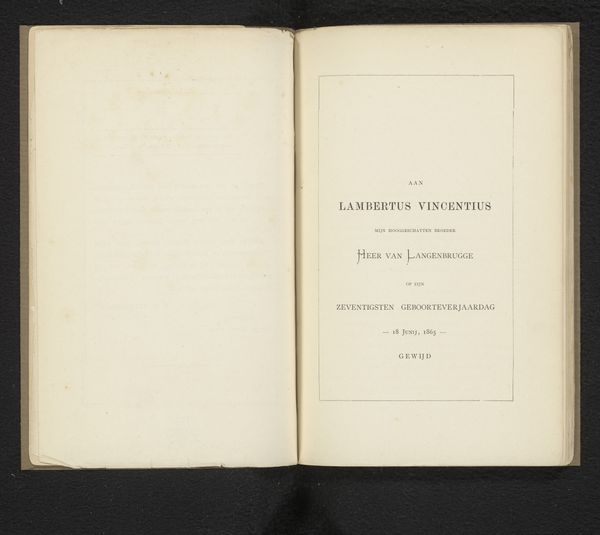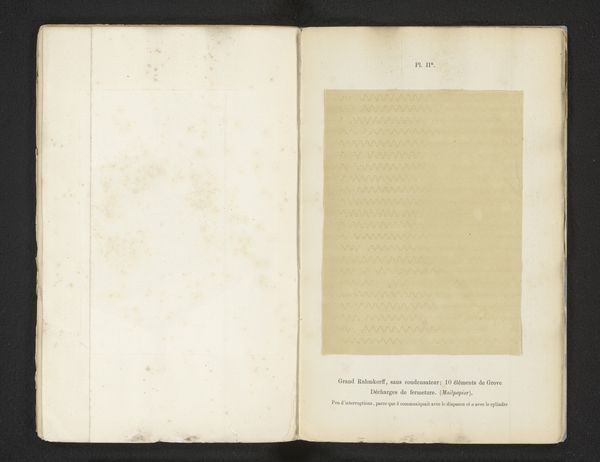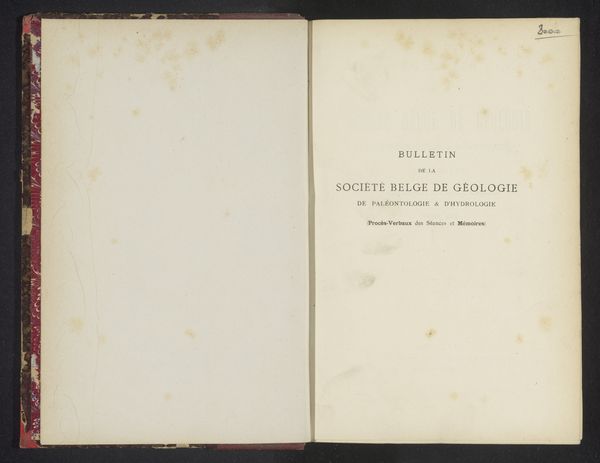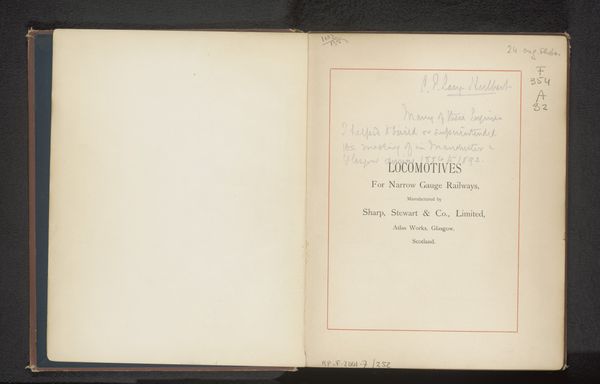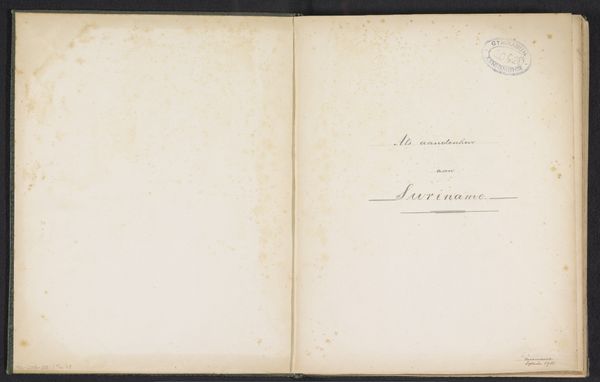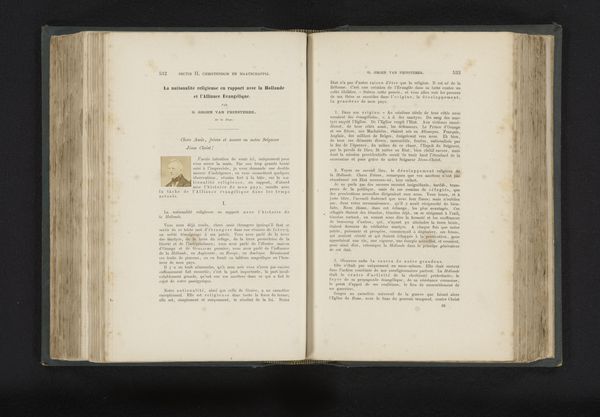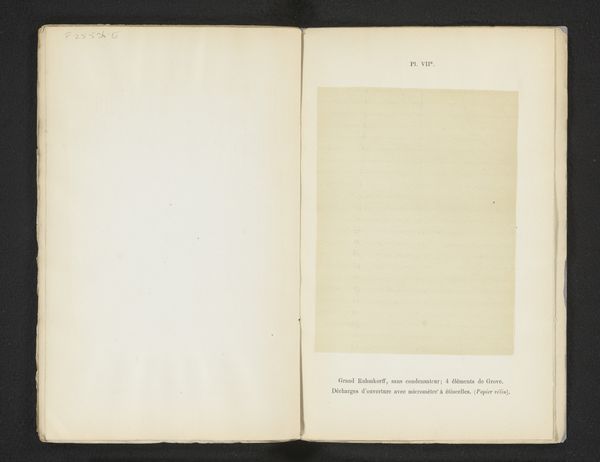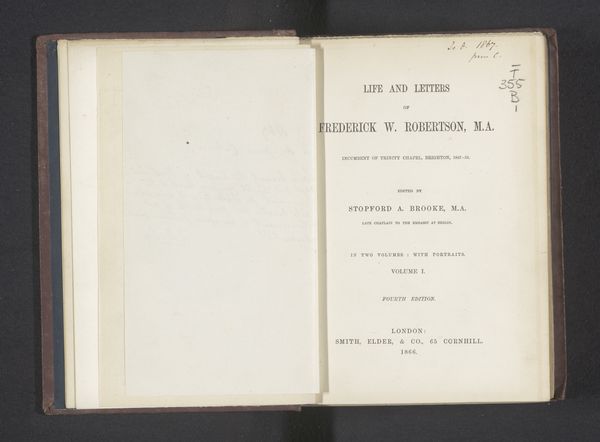
print, paper, typography
#
aged paper
#
homemade paper
#
paperlike
# print
#
hand drawn type
#
paper
#
personal sketchbook
#
typography
#
hand-drawn typeface
#
fading type
#
thick font
#
history-painting
#
handwritten font
#
academic-art
#
historical font
Dimensions: height 260 mm, width 167 mm, thickness 10 mm
Copyright: Rijks Museum: Open Domain
Curator: This image shows the open pages of "Lettere fin qui inedite di Evangelista Torricelli," printed in 1864. It presents previously unpublished letters of Torricelli, contextualized by a biographical sketch. It’s an incredible find from Giovanni Ghinassi. Editor: The immediate impact is quite remarkable—it looks both aged and delicate. The paper has taken on a beautiful cream hue that enhances the bold typeface. There's a sense of discovery here. Curator: Indeed. Typographically, it reveals much about the period. Note the almost hand-drawn quality of the typefaces and the way certain words and names are emphasized, imbuing them with historical weight and signifying the enduring importance of these texts and individuals. Editor: Absolutely. Consider Torricelli’s scientific legacy – he invented the barometer and advanced integral calculus, yet, the layout of this page subtly presents him more as a man of letters. This could tell us how 19th-century Italy constructed its intellectual heroes. Curator: The choice of fonts is interesting, isn’t it? We see a blending of Roman and, what appears to be, Greek lettering, reflecting perhaps the intellectual environment and cultural ambition of the time—linking Renaissance thinking with classical origins. The paper, showing signs of its age, also adds another layer to this connection to time and memory. Editor: It underscores how institutions and learned societies often shaped narratives around scientific achievement. This wasn’t merely about disseminating knowledge; it was also about shaping national identity through historical narratives. The act of publishing previously unavailable documents can reframe how history is received by new audiences. Curator: Seeing this artifact reminds us how historical texts carry a symbolic power, acting as vessels for remembrance and reinterpretation. By carefully preserving them, we continuously renew and revitalize cultural knowledge. Editor: It leaves me contemplating what it means to recover untold stories. We assign significance to artifacts based on shifting cultural and political priorities. Thanks to the printer’s meticulous hand, we’re now part of this continuous assignment of importance.
Comments
No comments
Be the first to comment and join the conversation on the ultimate creative platform.
